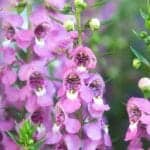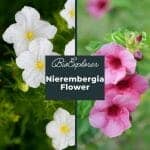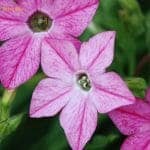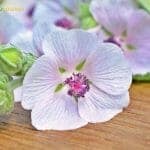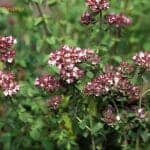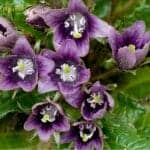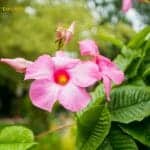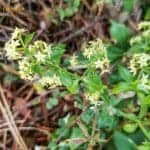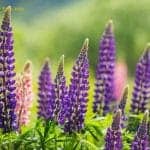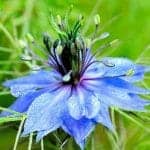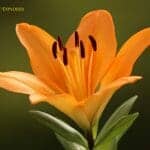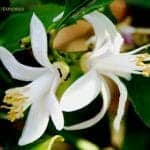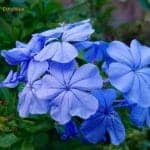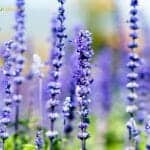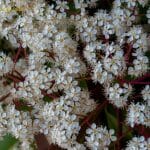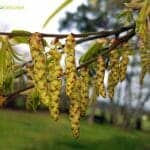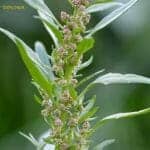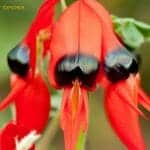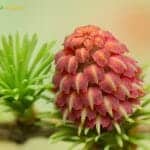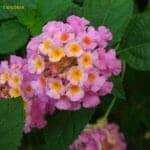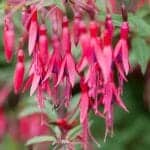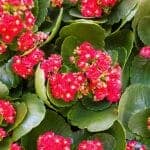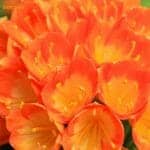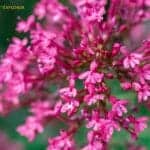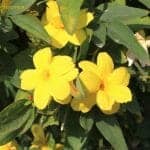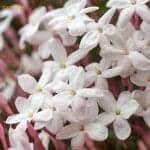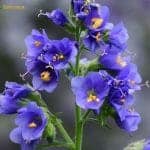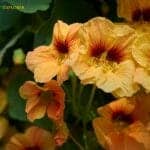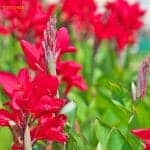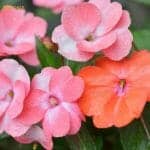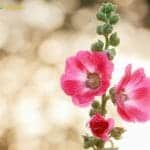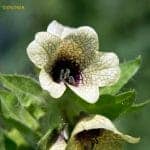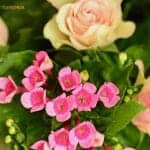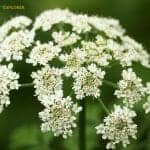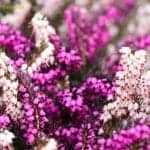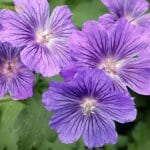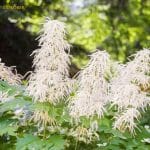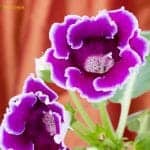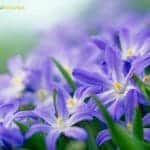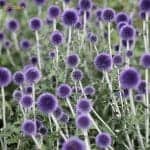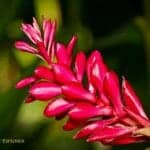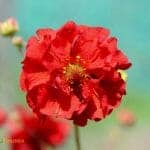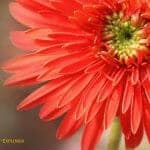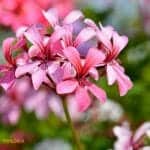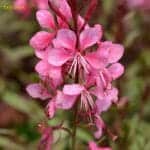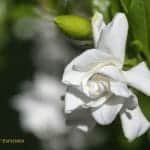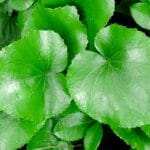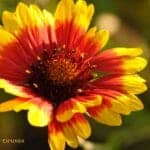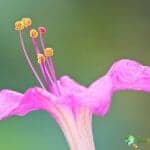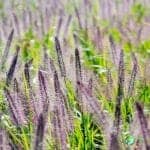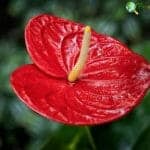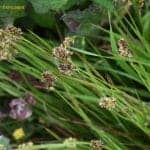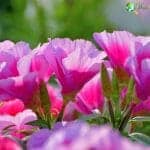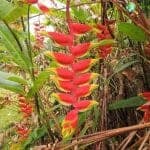the red flower - search results
If you're not happy with the results, please do another search
Angelonia
Angelonia angustifolia is native to the West Indies and Mexico. Angelonia is a semi-tropical plant that is mainly considered an annual plant. The blue-purple flowers (up to 3/4 inch wide each) bloom on narrow terminal spikes (up to 8 inches long) from late spring to early fall. Varieties are available in light pink, blue, white, and two-tone flower colors.
Nierembergia
Nierembergia's adorable cup-shaped flowers and neat growing habits make them a valuable annual bloom for borders and containers. Nierembergia has pretty, slender, narrow leaves covered with purple or bluish flowers at the tips. This flowering plant grows up to 6 inches tall and up to a foot wide.
Nicotiana
Discover the rich history and stunning beauty of Nicotiana species in Mexico, featuring night-blooming flowers, ancient rituals, and their enduring cultural significance.
Nettle
Urtica dioica, often referred to as nettle, nettle leaf, stinging nettle, or stinger, is an herbaceous perennial plant in the Urticaceae family. This plant has slender, pointed, somewhat cordate serrated leaves that grow 3 to 15 cm high. Slender catkins of small green florets appear from the leaf axils.
Marshmallow
Althaea officinalis, the marshmallow or marsh mallow, is a flowering species of plant native to North Africa, Western Asia, and Europe. True marshmallow flowers appear in clusters in the leaf axils from July to September. They are 1.2 to 2 in (3 to 5 cm) tall. The flowers are white to pale pink, with 6 to 9 outer sepals that are slightly scented.
Marjoram
Also known as sweet marjoram, Marjoram (Origanum majorana), is a perennial plant from the Lamiaceae (mint) family that is cultivated as a culinary herb. The Origanum genus is currently assigned to around 40 species. The small marjoram flowers are predominantly white to scarlet red in color.
Mandrake
Also known as Satan's apple, long missing from American pleasure gardens, mandrake (Mandragora officinarum) is staging a comeback, thanks to Harry Potter films and books. The solitary flowers have a bell-shaped crown of 5 petals, and they vary from purple to green-yellow. The flowers bloom in the center of the plant in spring.
Mandevilla
As a classic tropical vine, the mandevilla (Mandevilla sanderi) is an excellent way to add a touch of color to a sunny vertical space in any garden. Mandevillas are also known for their large, tropical-looking flowers. They are available in shades of white, red, and pink and several shades in between.
Manchineel
The Manchineel tree (Hippomane mancinella) is a species of the family of the Euphorbiaceae family. Its distribution area extends from northern South America to the tropical south of North America. The Manchineel trees produce tiny greenish-yellow blossoms that appear in spikes.
Madder
Madder (Rubia tinctorum) is a perennial herbaceous plant that belongs to the Rubiaceae family of coffee and bedstraw. Madder flowers are tiny and between 3 and 5 mm in diameter. Each flower has 5 petals in shades of yellow, and they bloom in summer.
Lupine
If you are looking for an eye-catching perennial with summer flowers that will stand out from the crowd, lupine (Lupinus polyphyllus) is a favorite. The flowers open from the bottom up and sometimes feature over one color on the same plant, in shades ranging from soft pastels to violet blues and deep reds.
Love-in-a-Mist
With a popular name like Love-in-a-Mist, one could guess that Nigella damascena would have a romantic story. The flowers are usually pale blue to light blue, but some can be lavender, pink, or white. Each flower is 1½-inches wide, with five large, petal-shaped sepals and tiny, deeply divided petals hidden under the stamens.
Loosestrife
Purple loosestrife (Lythrum salicaria) is a flowering plant in the Lythraceae family. It is a large family of plants with over 150 species of evergreen and herbaceous perennials. The sessile leaves are alternate or opposite on the stalk. The purple loosestrife inflorescence consists of many showy, white, magenta, or reddish-purple flowers found in racemes.
Lily
The beautiful flower of the lily plant makes it among the most well-known flowering plants in horticulture. But this eye-catching flower is more than it looks. The flowers are generally scented and come in various colors, including pink, purple, red, orange, white, or yellow.
Lemon Blossom
Lemon (Citrus × limon) is a hybrid of the genus Citrus and the common name for the popular edible fruit of this small, sprawling tree or shrub. The slightly fragrant flowers can be single, or there can be two or more. The opened flowers have 4 or 5 petals, white on top and purple on the underside.
Leadwort
The name Leadwort may not sound flattering, but this beautiful, hardworking perennial always deserves a place in a home garden. The terminal clumps of five-petalled gentian blue flowers (1/2 to 3/4 inch in diameter) appear on the foliage during a long flowering period from summer to frost.
Lavandula
Lavandula angustifolia is undoubtedly amongst the most popular herbaceous plants. With its purple flowers, the fragrant plant adorns many window sills, gardens, and balconies. Lavandula typically blooms between late May and mid-September. There it forms purple flowers, rarely white, which are arranged in pseudo-whorls.
Laurestine
Laurustine (Viburnum tinus) is a vigorous evergreen shrub known for its showy clusters of flowers, brightly colored berries, and leathery leaves. The blossoms are small, light pink or white, and are formed in winter from reddish-pink florets in dense racemes with a diameter of 5 to 10 cm.
Hornbeam
Carpinus caroliniana, commonly known as Hornbeam, is a slow-growing, trimmed medium-sized deciduous tree with an eye-catching spherical shape. The flowers (catkins) are yellow and droopy and appear as separate female and male catkins in spring.
Goosefoot
Easily recognizable but often called the lambs quarter, the grape-leaved goosefoot (Chenopodium album) is a plant found in several countries worldwide. In fall, small greenish-yellow flowers bloom in the axils of the leaves and on the tips of the branches while the flower head develops.
Clianthus
Also known as a lobster claw, Clianthus is a bushy, small, evergreen shrub native to New Zealand's North Island from the Fabaceae (legume) family. In late spring and early summer, Clianthus produces groups of 15 to 25 red to bright pink waxy flowers that are 3-inches long.
Larch
If you like the effect of a coniferous plant and a deciduous tree's bright color, you can have both with the Larch tree (Larix spp.). Nestled between the needles, you'll find pink flowers that will eventually turn into cones. The cones start out yellow or red and turn brown as they ripen.
Lantana
Lantana camara, also known as common Lantana, is a species of the Verbenaceae (verbena) family indigenous to the American tropics. Each flower is tubular and has four elongated lobes (petals) that change color with age. The colors come in different shades of pink, red, orange, yellow, or white.
Lady’s-eardrop
Lady's-eardrop (Fuchsia magellanica) is an eye-catching hedge in milder regions where it remains semi-evergreen. Lady's-eardrop is an erect, deciduous shrub with lanceolate leaves. It grows up to 3.6 meters (11 feet) by 2 meters (6 feet) tall at medium speed and produces numerous small, tubular pendulous flowers in shades of pink, red, and often white.
Kennedia
Kennedia is a genus of about 13 species of flowering perennials in the Fabaceae (pea) family and is native to Australia. The flowers are often arranged in the axils of the leaves, relatively showy and prominent, purple, blue, red, or almost black with leaf-shaped bracts at the base, but occasionally drooping when the flowers open.
Kangaroo Paw
Unlike any other flower, the Kangaroo Paw (Anigozanthos flavidus) has long club-shaped buds covered with thick hairs of a deeper hue than the flowers. The flower can be brown, orange, pink, red, yellow, or green, depending on the species.
Kalanchoe
The Kalanchoe blossfeldiana, commonly known as Kalanchoe, is among the most versatile succulents and is loved for its pretty leaves and colorful blooms. Their flowering time is incredibly long for an indoor plant. These yellow, pink or bright red flower racemes last for several weeks.
Kaffir Lily
The Kaffir Lily (Clivia miniata) really knows how to put on a show - the display of its vivid buds is a spectacular precursor of spring. The conspicuous funnel-shaped blooms are produced in an umbellate-shaped flower head, colored yellow, red, or orange.
Jupiter’s Beard
Jupiter's Beard (Centranthus ruber) is well-known for its nearly uninterrupted flowering ability and extreme drought tolerance. This beautiful flower are loved for its ability to produce a showy white, pink, or crimson flowers tree, sometimes on barren soils from spring to frost.
Jessamine
Native to the Southeastern United States, Jessamine (Gelsemium sempervirens) is a large vine for the landscapes. Jessamine grows 20 ft or more when cultivated as a vine. The fragrant, golden yellow flowers cover the finely structured cascading foliage from February through April.
Jerusalem Oak
Jerusalem oak (Dysphania botrys) was previously classified in the Ambrosia genus, with the botanical name Ambrosia mexicana. The plant has several small, compact clusters of greenish-yellow flowers at the end of the stems that resemble a stinging nettle.
Jasmine
Jasmine (Jasminum polyanthum) is a genus of vines and shrubs in the Oleaceae (olive) family. The flowers are usually 2.5cm in diameter and come in shades of yellow and white.
Polemonium
Jacob's ladder (Polemonium caeruleum) is a perennial species of the Polemoniaceae family. It is native to the temperate regions of Asia and Europe, where it grows mainly in meadows, grasslands, and damp forests. They are available in yellow, blue, white, or pink, depending on the variety.
Indian cress
Indian cress (Tropaeolum majus), also known as monks cress, nasturtium, or garden nasturtium, is a flowering plant species from the Tropaeolaceae family native to the Andes from Bolivia to Colombia. The short-lived perennial or easy-growing annual with disc-shaped foliage and bright orange or red flowers are cultivated, possibly origin hybrid.
Indian cane
Indian cane (Saccharum officinarum) is a fast-growing species in the Poaceae (grass) of the genus Saccharum. It is better suited to dry conditions and poor soils. It is leafier, with thin, relatively complex red canes.
Impatiens
As a classic annual shade garden, Impatiens have been a popular choice for a long due to their flowering power and a great variety of colors. It has been extensively crossed to produce many varieties that have flowers in a variety of shades, including white, orange, purple, lilac, red, rose, pink, and two-tone varieties.
Hollyhock
An epitome of cottage gardens, Hollyhocks (Alcea rosea) are towering flowers that bloom in a wide range of colors for an extended period in summer. Hollyhocks are available in various colors, including yellow, white, red, purple, pink, blue, and even black.
Hogbean
Hogbean (Hyoscyamus niger), also known as stinking nightshade, henbane, or black henbane, is a highly poisonous plant from the Solanaceae (nightshade) family. The conspicuous funnel-shaped flowers have 5 cream to dark yellow petals with dark centers and purple veins.
Bouvardia
Bouvardia (Bouvardia ternifolia) is a genus of vibrant, tubular flowers native to Mexico, with species like B. ternifolia showcasing brilliant scarlet to coral-red blooms. The flowers grow in small, elegant clusters that attract hummingbirds. Historically, Bouvardia has ties to colonial Mexico, where it was cultivated for ornamental gardens.
Angelica
Angelica is a short-lived perennial or hardy biennial herb in the carrot family. It has a powerful musky fragrance and an aromatic sweet taste. The small, yellowish-white, often pink flowers form semicircular, double-apical umbels about 6-inches in diameter.
Heather
Heathers are easily over 500 varieties available. Most blooms in summer and their flower colors range from white to pink to dark purple, and their leaves are green to bright orange. Also, the leaves are scaly and small.
Hardy Geranium
Perennial Geraniums make beautiful garden plants as they come in a wide range of sizes, colors, and shapes. There are more than 300 varieties and species of perennial Geranium, so you can easily find one that's ideal for you. The flowers come in various colors, including white, blue, purple, and pink, and have 5 petals that are sometimes beautifully patterned or veined in contrasting colors.
Goat’s Beard
Goat's Beard (Aruncus dioicus), also called bride's feathers, is a perennial plant in the Rosaceae family. The pinnate clusters of filmy cream-colored thread-like flowers grow on long, branching spikes above the foliage and bloom from late May to mid-July.
Gloxinia
Sinningia speciosa, commonly known as gloxinia, comes from Brazil and belongs to the Gesneriaceae family. It has large, trumpet-shaped flowers, white, red, purple, or lavender. The leaves are velvety, ovoid to oblong in a rosette.
Glory-of-the-Snow
Chionodoxa forbesii is commonly referred to as the Glory-of-the-Snow because it flowers early enough that its flowers often protrude directly from the snow. The small, upturned flowers are pale blue with a whitish center, making them nearly translucent or glassy.
Globe Thistle
Globe Thistle is among the prickly jokes of life. They thrive nearly everywhere and carry a dreadful sting when they come in contact with the skin. However, they are excitingly shaped and available in deep purples and blues that are beautiful additions to the garden.
Ginger
Ginger is the popular name for the perennial herb Zingiber officinale, an upright plant in the family Zingiberaceae that is widespread for its edible underground horizontal stem (rhizome). The flowers have dense conical spikes about an inch thick and two to three inches long and consist of overlapping green bracts with yellow edges.
Geum
Geum, sometimes referred to as Avens, is certainly not one of the most popular perennials. However, it has been grown in gardens for several years. In spring, upright, filiform, branchy, flowering stems rising above the leaves with 5-leaf tips, brick red to orange-red (up to 1.5" in diameter) flowers with clusters of yellow stamens.
Gerbera
The Gerbera flower, native to South Africa, belongs to the Asteraceae family along with the sunflower. They belong to an extensive family since there are currently more than 40 species of Gerbera flowers in the world. The striped flowers of the species are usually available in orange, yellow, and red.
Geranium
A classic garden plant indeed, Geraniums have been a favorite of many gardeners for over a century. Although most Geraniums are cultivated as annually, they are perennial plants. Geraniums have symmetrical flowers with petals of the same shape and size. The flowers vary in color from white to pink, through deep reds to purple.
Gaura
Attract butterflies and other pollinators to your garden with Gaura's long stems, which are made of delicate flowers. It is a Mexican perennial herb that grows to a height of 15 to 48 inches. The flowers are available in pink, white, or a combination of the two colors.
Gardenia
Gardenia jasminoides, commonly known as cape jasmine or Common Gardenia, are native to Japan and southern China. It is primarily known for its highly aromatic white blooms (up to 3 inches in diameter), borne in small groups or singly.
Galax
Galax (Galax urceolata), also known as wandflower or beetleweed, is a slow-growing conifer native to the United States. Small pinnate white flowers, arranged in a narrow raceme on a bare stem, rise above the foliage in early summer or late spring.
Gaillardia
The hearty, heat-tolerant hedge flower is an excellent addition to the casual garden with vibrantly patterned, daisy-like blooms in yellow, orange, and red shades. The flowers of the Gaillardia species comprise numerous small central disk flowers enveloped by 15 or more sterile striped flowers (although some do not have striped flowers).
Four O’ Clock
Four O'clock will delight both your eyes and your nose, with fragrant tubular flowers that come in a variety of patterns and colors. Often, you even get different colored flowers on the same plant. the flowers are tubular, red, pink, or white, up to 6.5 cm long and 3.5 cm wide with 5 to 6 stamens.
Fountain Grass
Like many herbs, Fountain Grass (Pennisetum setaceum) looks spectacular when lit by the setting or rising sun. However, fountain grass also sends out beautiful, fluffy bloom plumes in late summer. The red, pink, or white plumes (depending on the variety) continue into autumn and give the plantings a casual and relaxed look.
Flamingo
The Flamingo Flower (Anthurium andraeanum) is another gift from the tropical forests of Latin America to humanity. Their curious lavender, red, pink, or white heart-shaped flowers have a twisted spadix (inflorescence) from white to yellow in the center.
Field Wood-rush
The Field Wood-rush (Luzula campestris) is a common plant in green areas like meadows, grassy areas, and plains. The plant is a common European species and is occasionally found in North America. The brown flowers are produced on thin, brush-shaped central stems that can grow up to 6 inches long.
Farewell-To-Spring
Appropriately named, Farewell-To-Spring (Clarkia bottae) signals that the end of the spring bloom's peak. The Farewell-to-Spring bloom is bowl-shaped, pink to lavender, sometimes speckled with red, and flowers from late April to July (depending amount of rain and the timing).
False Bird of Paradise
The False Bird of Paradise (Heliconia rostrata) is a gorgeous, highly-prized plant with brightly colored bracts and small, hidden flowers. The False Bird of Paradise is so remarkable that once you've seen it, you will never forget it! The colors of the flowers vary in shades of green, yellow, red, pink, and orange.


